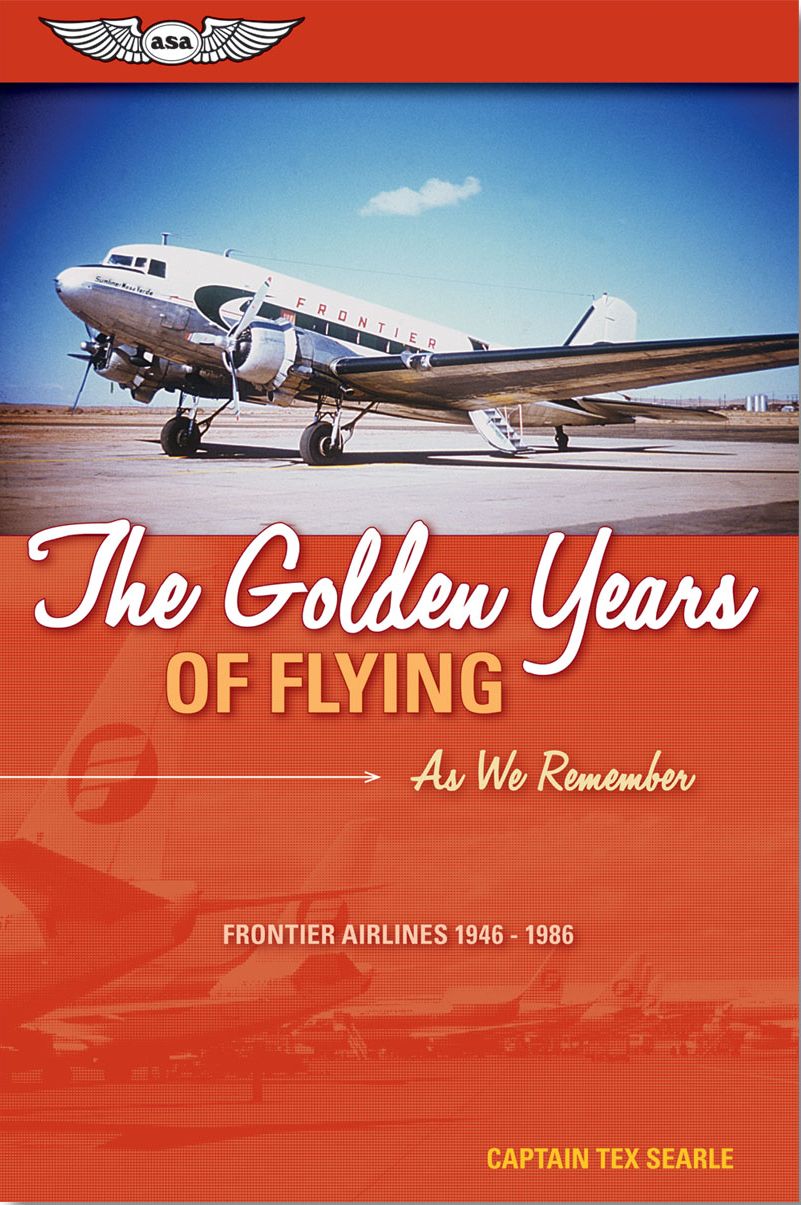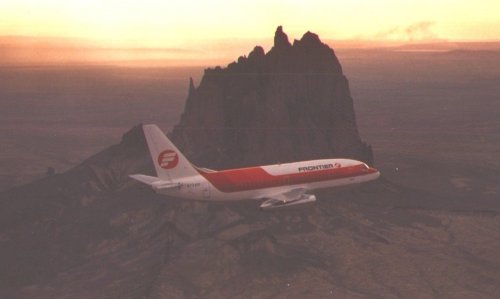
EXCERPTED FROM “THE GOLDEN YEARS OF FLYING”
By Old Frontier Airlines Captain Tex Searle with his kind permission
and his publisher Aviation Supplies & Academics (copyright 2009).
His grand memoir is for sale at Amazon.com and ASA
|
EGG HEAD Captain Bob Rich had hands that weaved all over the cockpit like a maestro leading the symphony. He could setup all those switches in the cockpit with a wave of his hand while you were still trying to locate the proper checklist. He never missed a beat or made a mistake. But, as he tells it, he did have a little trouble with an egg once. In the 1940s and ‘50s it was nice to have a snack to tide you over on some of the long hauls in the DC-3. But unless you brought your lunch there was nothing to eat except consomme soup. Tired of consomme soup I was among those who would brown bag it, and I always brought along something extra for a hungry copilot. Handing Dick Ure a hard boiled egg, I said, “Have at it.” Dick was a character in his own right and taking the egg, he cracked it on the top of his head. I was laughing until I saw raw egg running down the face and neck of my copilot. We both sobered up fast. I said, “I made a mistake.” Copilot Ure, knowing there is not much you can tell a captain, didn’t say anything. But with egg on his face, he was awarded the next landing. As I think back to those days, I wouldn’t trade them for any other period of time. We sometimes found it necessary to survive by our wits. In those days you were an aviator that flew by the seat of your pants when all else had failed. My memories of this stimulating period in aviation and flying the DC-3 will always be with me and I frequently think back to that era when there was still romance in aviation to sustain me in these times. After retiring, I lived in Hawaii a number of years, and now settled in Littleton, Colorado. I’m just hanging around until its my turn to go to that big hanger in the sky. I asked Captain Rich at what point in life he made the decision to fly. He said, “there was no decision, I always knew I was going to fly.” Captain Rich began flying in Chicago in 1938. He flew the old Fairchilds and a Waco with an 0X5 mounted engine among others. During WWII he flew for the Army Air Corps Transport Command. Among the many fighters he flew, including the P-40 he particularly enjoyed flying the P-51 and the P-47. He flew most of the heavy bombers and spent considerable time flying the B-24. He flew all the medium bombers from the A-20 Boston/Havoc family, the B-25 Mitchell, Douglas A-26 Invader, and the B-26 Marauder. THE MARAUDER Captain Rich remembers standing at attention with other cadets on the drill field when a formation of B-26s flew over. Before the whole viewing staff one of the aircraft dropped out of formation, rolled over and spun to the ground. He says, “That didn’t do much for my esprit de corps.” With Captain Rich’s logs showing he had flown the B-26 Marauder, and delving into the history of this rare beauty, a short narrative of its flying characteristics might be enlightening to those not familiar with this bullet like twin engine aircraft of which 4,115 were built by Martin. As far back as when Pan American Air Ferries contracted overseas transporting of military aircraft, the B-26 Marauder was not popular with ferry crews. They were heavy planes with short wings that gave it a wing loading of nearly 50 lbs/sq. ft. compared to the DC-3 wing loading of 25.5 lbs/sq. ft. and seemed to have an unusually high rate of accidents, landing and taking off. The Pratt & Whitney R-2800s were the same engines used on Frontier Airlines CV-340s. The ferry crews called the Marauder “the flying prostitute.” With its short wing span, it was said, “it had no visible means of support.” Others called it “the separator” because it separated the men from the boys. Yet others called it “the widow maker or flying coffin.” More wing was added, but also more weight so the Marauder still was not popular with many of the crews who flew her. But she held an enviable record for her performance in WWII flown by proud crews who were given added proficiency training for her marginal flying characteristics. The last remaining Marauder in flying condition crashed in 1995 killing all on board. Of the several others that survive, one is in the USAF Museum near Dayton, Ohio and another located in the National Air & Space Museum in Washington. One or two others are in various stages of restoration on the West Coast. After WWII, Captain Rich flew for the Flying Tigers from 1946 until 1948. He was employed by Challenger Airlines in June of 1948, and retired from Frontier in 1980. After pushing throttles for over thirty-two years for Frontier, Captain Rich was forced to vacate the front office because of the mandatory retirement age of sixty thought up by the FAA (Federal Aviation Agency). His logs totaled out at 30,700 hours in the sky. There could never be enough accolades bestowed on those aviators who flew pre-radar pre-pressurized aircraft on a daily basis enduring all the destructive devices that Mother Nature disguised in clouds to hinder their flight paths. Retired Frontier Captain Bob Rich put it bluntly, “In those days our eyes were our radar and you couldn’t force an airplane to do more than it was created to do. There are many aluminum scrap piles strewn over the landscapes by those who thought otherwise.” The most reliable weather reports available were the reports crews passed on to one another while passing in flight. Captain Bob Rich was climbing through turbulent rain sodden clouds after departing Jackson Hole, Wyoming. The inbound flight with Chief Pilot Scott Keller at the controls asked for the weather conditions in the Jackson Hole area. No one will ever know the reaction of our chief when he received Captain Rich’s report: “Hell, I can see clear to the windshield.” WAS IT ALL A DREAM? Stepping from the cockpit for the last time, the reassuring words of Captain Bob Rich ring loudly in my ears. “We were uniquely privileged to have participated in pioneering the art of flying the Rocky Mountains in a safe and reliable manner. “Unquestionably, we needed the money. But as I have suggested, all seats arrive at the same time and we were very aware that everyone on the airplane was a soul for which we were responsible. “Occasionally, you and I were subjected to extremely difficult situations. Our experience provided us with the moxie to depart A and arrive B intact. “Fifty years later we can enjoy our families and grandchildren knowing that we DID OUR BEST and it was DAMNED GOOD.” |

|
|
We are FLamily
|
Webmaster
Gone West But Not Forgotten!!!